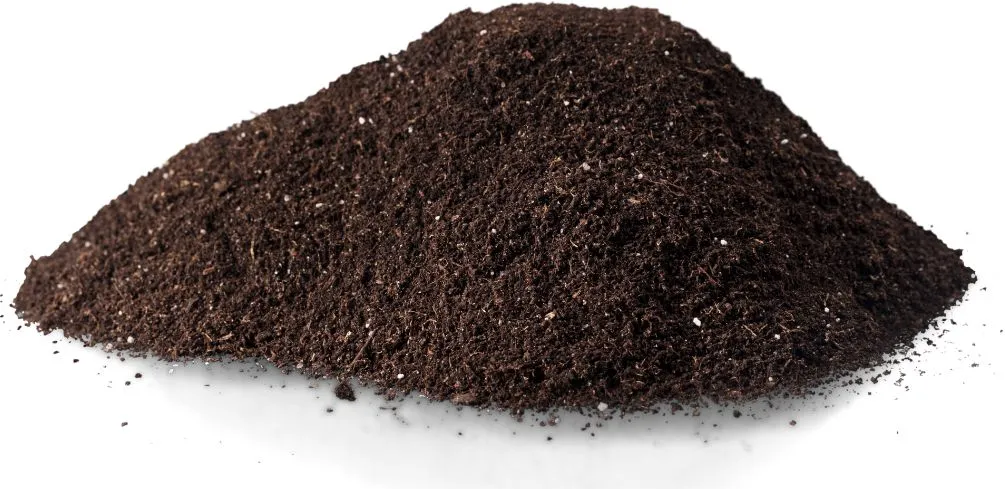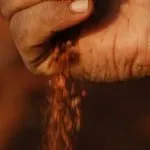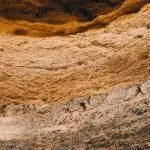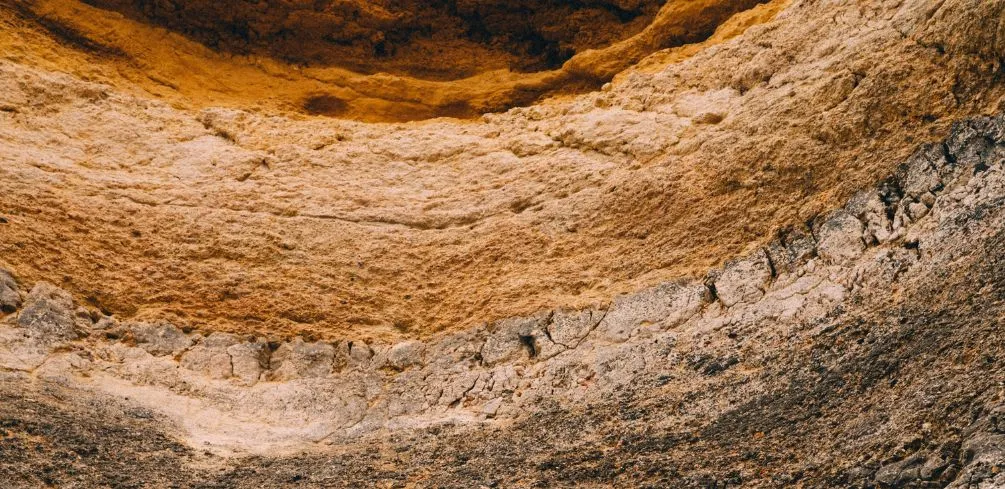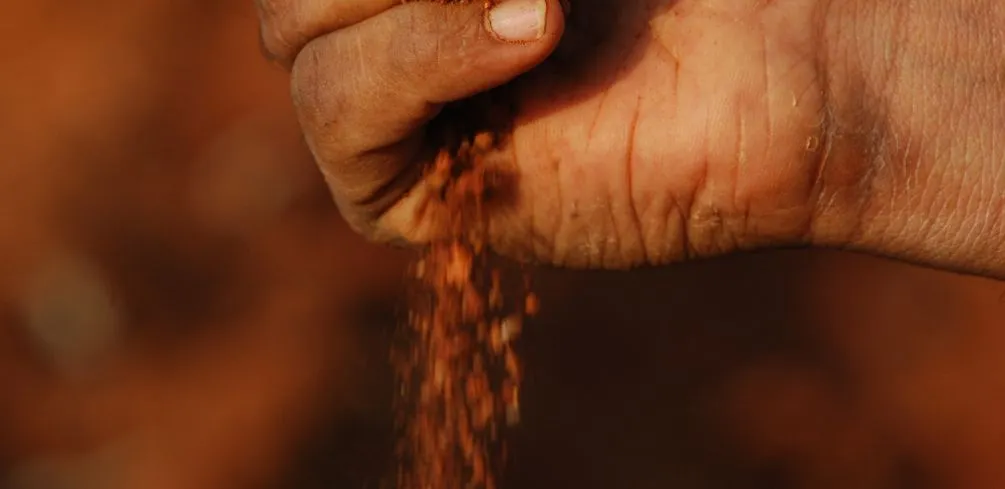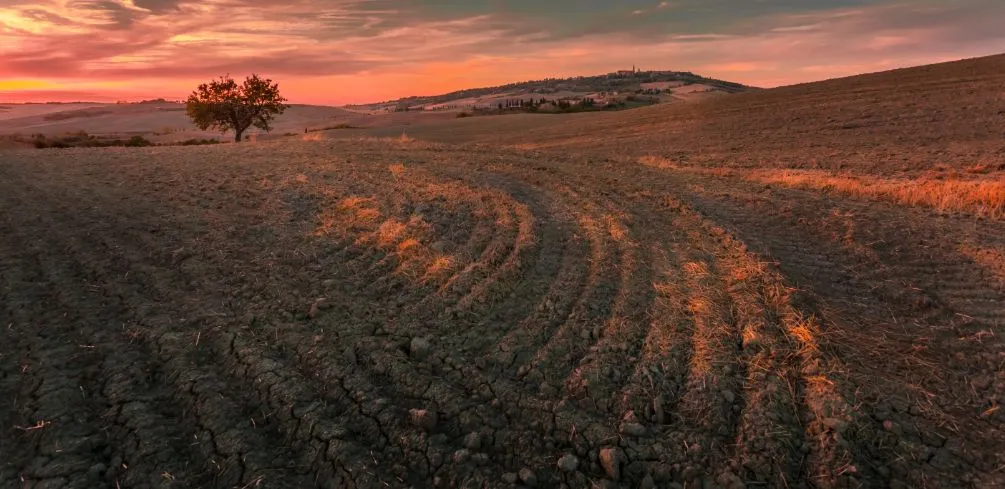Soil is a complex and dynamic system that plays a crucial role in supporting life on Earth. Understanding the properties of soil, including its texture, is essential for sustainable agriculture, land management, and environmental conservation.
Soil texture refers to the proportion of sand, silt, and clay particles in a given soil sample. This property affects many aspects of soil function, such as water holding capacity, nutrient availability, and plant growth. Therefore, understanding soil texture is critical for making informed decisions about soil use and management.
In recent years, there has been growing interest in understanding soil texture among farmers, researchers, and policymakers alike. This interest stems from the recognition that soils are not homogeneous but vary widely in their physical and chemical characteristics. Moreover, different soils have different capacities to support plant growth and ecosystem services.
Therefore, understanding soil texture is crucial for improving agricultural productivity and sustainability while minimizing environmental impacts. In this article, we will explore the concept of soil texture in more detail by discussing its definition, measurement techniques, ecological implications, and practical applications.
Defining Soil Texture
Soil texture is a physical property of soil that is determined by the size distribution of mineral particles present in it. The composition of different sizes of soil particles, including sand, silt, and clay, defines its texture. Soil composition can vary widely, which produces different types of soil textures.
The grain size distribution in the soil determines the texture and properties of the soil. Sand particles are relatively large (0.05-2 mm) and can be seen with the naked eye. Silt particles are smaller than sand (0.002-0.05 mm) and cannot be seen without magnification. Clay particles are the smallest (less than 0.002 mm) and are not visible even under a microscope.
The proportion of these three types of particles present in a given soil sample determines its texture and properties, like water holding capacity, drainage rate, fertility levels, and nutrient availability to plants growing in it.
Understanding soil texture is essential for effective farming practices as it helps farmers determine what crops grow best in specific soils and how they should manage their fields accordingly to optimize crop yield while maintaining or improving soil health.
Measuring Soil Texture
So, you want to measure soil texture? The first step is to understand the concept of soil particle size.
Soil texture refers to the proportion of different-sized mineral particles that make up a soil sample. These particles are classified into three categories: sand, silt, and clay.
Sand particles are the largest, ranging from 0.05mm to 2mm in diameter. Silt particles are smaller, measuring between 0.002mm and 0.05mm in diameter, while clay particles are the smallest, less than 0.002mm in diameter.
Measuring soil texture is important for various reasons, one of which is understanding how it affects soil infiltration rates. Infiltration rate measures how fast water moves into the soil surface when it rains or when water is applied during irrigation.
Soils with high sand content tend to have high infiltration rates because sand particles have large spaces between them, allowing for easy movement of water through them, compared to soils rich in silt and clay, which have small spaces between their finer particles resulting in slow water movement through them.
Therefore, measuring soil texture can help farmers determine irrigation intervals and amounts necessary for crop growth and development, as well as minimize nutrient loss due to excess water runoff.
Implications For Ecosystem Services
Measuring soil texture is crucial in determining the composition of a particular soil sample. It provides information on the relative amounts of sand, silt, and clay in a soil sample, which then determines its texture.
Soil texture plays an essential role in ecosystem services such as water retention, nutrient cycling, and carbon sequestration.
Soil texture has a significant impact on carbon sequestration since it affects how much organic matter can be stored in the soil. Soil with high clay content can hold more organic matter than one with high sand content. As organic matter decomposes, it releases carbon dioxide into the atmosphere.
However, when organic matter is stored in soils through carbon sequestration practices, such as no-till farming and cover cropping, it reduces the amount of carbon dioxide released into the atmosphere.
The relationship between soil biology and texture is also critical since microorganisms that live in soils play an essential role in nutrient cycling and plant growth. Understanding how these microorganisms interact with different textures can help improve agricultural practices and increase overall productivity.
- Soil texture determines water-holding capacity.
- Clay-rich soils have higher cation exchange capacity.
- Texture affects nutrient availability for plants.
- Soil structure correlates to biological activity.
- Organic matter storage potential is affected by soil texture.
The interplay between soil texture and ecosystem services highlights the importance of understanding this fundamental aspect of soil science. By comprehending how different textures affect various ecological processes, such as carbon sequestration and nutrient cycling, we can create better management practices that support sustainable agriculture and protect our environment.
Practical Applications In Agriculture
Understanding soil texture has significant practical applications in agriculture. Soil texture affects crop yield as different textures have varying abilities to retain water and nutrients. For example, sandy soils typically have low water and nutrient retention capabilities, while clay soils tend to retain more water and nutrients but may also be compacted, limiting root growth.
Therefore, farmers can use knowledge of soil texture to select crops that are best suited for their particular soil type and implement appropriate fertilization and irrigation practices.
| Soil Texture | Effect on Crop Yield |
|---|---|
| Sandy | Low |
| Loamy | Moderate |
| Clayey | High |
Additionally, understanding the impact of soil texture on irrigation management is crucial for efficient water use in agriculture. Sandy soils require more frequent watering due to their low water holding capacity, while clay soils may require less frequent watering but must be managed carefully to avoid over-saturation and poor drainage.
Farmers can also use knowledge of soil texture to design irrigation systems that are tailored to their specific soil type, ensuring that crops receive adequate water without wasting resources.
In summary, understanding soil texture is essential for successful crop production and efficient irrigation management in agriculture. By utilizing this knowledge, farmers can optimize their practices for maximum yield while minimizing resource waste.
Importance For Environmental Conservation
The importance of understanding soil texture cannot be overstated in environmental conservation. Soil texture affects many aspects of plant growth and water retention, which are critical to maintaining healthy ecosystems.
Soil texture determines the amount of space between soil particles, which directly influences how well water can penetrate and be retained in the soil. Soil with a high percentage of clay particles has smaller pores and retains more water than sandy soil.
This characteristic is essential for plants that require consistent moisture throughout the growing season, especially during drought conditions. In contrast, sandy soil drains quickly, making it ideal for plants that prefer dry conditions.
Understanding soil texture can help land managers determine which plants will thrive in a particular area and how to manage irrigation practices effectively. Thus, it is imperative to understand the impact of soil texture on water retention and its influence on plant growth for effective environmental conservation strategies.
The benefits of understanding soil texture extend beyond agriculture and gardening; this knowledge is essential for mitigating environmental degradation and conserving natural resources. For instance, identifying areas with soils that have poor drainage could prevent flooding events by improving water infiltration rates through necessary interventions such as vegetation planting or artificial drainage systems.
Furthermore, understanding how different types of soils interact with contaminants can improve remediation efforts after environmental disasters such as oil spills or chemical contamination incidents.
Therefore, policymakers should prioritize educating stakeholders about the importance of soil texture in environmental conservation efforts to ensure sustainable practices that protect our planet’s natural resources without compromising economic development goals.
Frequently Asked Questions
How Does Soil Texture Affect Water Retention?
Soil texture, specifically the particle size and porosity of the soil, has a significant impact on its water retention capacity. Soil with larger particles, such as sand, has a higher porosity and lower water retention ability compared to soils with smaller particles, like clay.
The spaces between soil particles affect how much water is retained in the soil, with smaller gaps providing more space for water storage. In addition, organic matter content can also play a role in water retention capacity by increasing the soil’s ability to hold onto water through complex chemical interactions.
Understanding how soil texture affects water retention is crucial for determining irrigation needs and improving crop growth in agriculture.
What Is The Relationship Between Soil Texture And Nutrient Availability?
What is the relationship between soil texture and nutrient availability? Soil texture plays a significant role in determining the number of nutrients available to plants.
Fine-textured soils, such as clay, have more surface area and can hold onto more nutrients, while coarse-textured soils, such as sand, have less surface area and are less able to retain nutrients.
Additionally, soil texture affects microbial activity, which also impacts nutrient availability. For example, organic matter in fine-textured soils promotes microbial activity, leading to increased nutrient availability.
Moreover, soil texture is linked to carbon sequestration; fine-textured soils can store more carbon than coarse-textured soils due to their ability to retain organic matter. Therefore, understanding the relationship between soil texture and nutrient availability is crucial for sustainable agriculture practices and maintaining healthy ecosystems.
Can Soil Texture Impact The Growth And Survival Of Certain Plant Species?
Plant adaptation is a complex process that depends on various factors, including soil composition.
The texture of soil can impact the growth and survival of certain plant species. For instance, sandy soils tend to be loose and have a low water-holding capacity, which can lead to drought stress for plants.
In contrast, clay soils are dense and tend to retain moisture, making it difficult for air to circulate around roots. This can lead to reduced oxygen availability and root rot in some plants.
Understanding how soil texture impacts plant growth and survival can help gardeners and farmers choose the right plant species for their soil type and implement appropriate practices, such as irrigation or drainage systems, to optimize crop yield.
Is There A Way To Alter Soil Texture To Improve Crop Yields?
As the demand for food production continues to increase, farmers are constantly seeking ways to improve crop yields. One potential solution is soil texture modification and soil structure improvement.
Altering the texture of soil can have a significant impact on the growth and development of plants. However, it requires a thorough understanding of the soil’s composition and characteristics.
Soil texture modification involves adding or removing certain components to adjust its physical properties such as water holding capacity and nutrient availability.
Improving soil structure involves enhancing its stability and reducing compaction, which in turn promotes root growth and nutrient uptake. Through these practices, farmers can maximize their yield potential while minimizing environmental impact.
How Does Soil Texture Impact Soil Erosion And Sedimentation?
Soil texture plays a crucial role in preventing soil erosion and sedimentation, making it an important factor in watershed management. The texture of the soil determines how much water it can hold, how easily water can penetrate it, and how much resistance it provides against wind and water erosion.
Soils with smaller particles, such as clay, tend to have a higher capacity for holding water but also have slower infiltration rates that can lead to surface runoff during heavy rainfall events. On the other hand, soils with larger particles like sand are porous and allow water to infiltrate faster but also have lower water-holding capacities.
Understanding the importance of soil texture in preventing soil erosion is essential for farmers and land managers to make informed decisions regarding conservation practices that promote sustainable land use.
Conclusion
Soil texture is an essential aspect of soil science that influences various soil properties and processes. The texture of the soil affects water retention, nutrient availability, plant growth and survival, crop yields, and soil erosion and sedimentation. Understanding these relationships is crucial for farmers, gardeners, and environmental scientists to manage soils sustainably.
For instance, sandy soils have low water retention capacity but high aeration potential, which makes them suitable for drought-tolerant plants. Conversely, clayey soils retain more water but can be poorly aerated, limiting root growth.
Soil texture also affects nutrient availability because fine-textured soils have higher cation exchange capacity than coarse-textured ones. This means that clayey soils can absorb more nutrients from fertilizers or organic matter than sandy soils. Furthermore, soil texture can affect the susceptibility of certain plant species to pests or diseases because some insects prefer certain textures over others.
Therefore, managing soil texture is critical for maximizing agricultural productivity while minimizing environmental damage. Farmers can use various techniques such as cover crops or crop rotation to improve soil structure and increase organic matter content. Similarly, conservation practices such as contour farming or terracing can reduce erosion rates on sloping lands with sandy or loamy soils.
In conclusion, understanding soil texture is essential for sustainable land use practices that balance economic and ecological goals.
